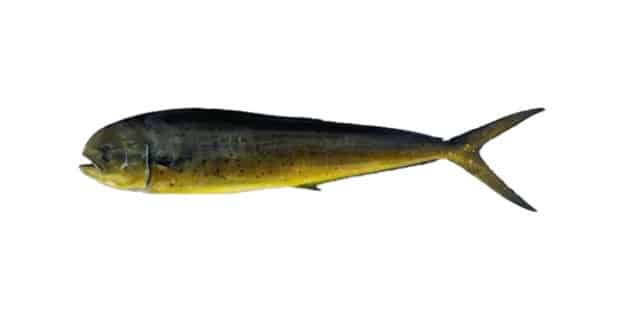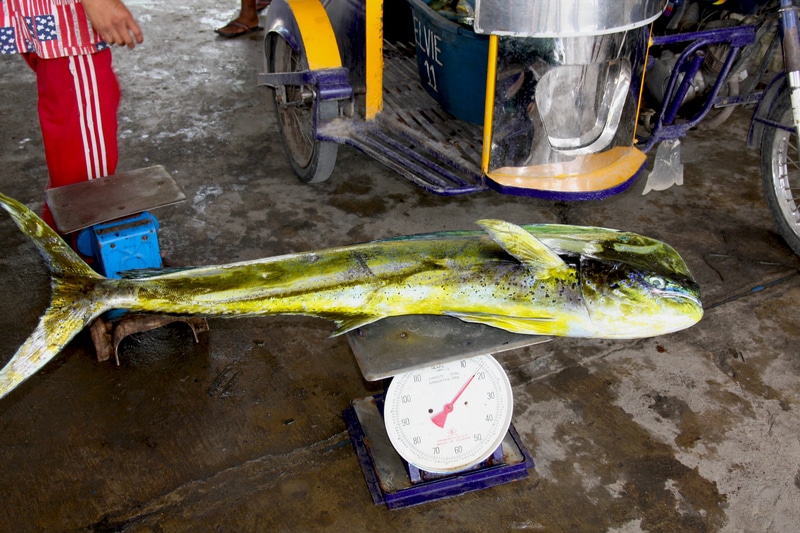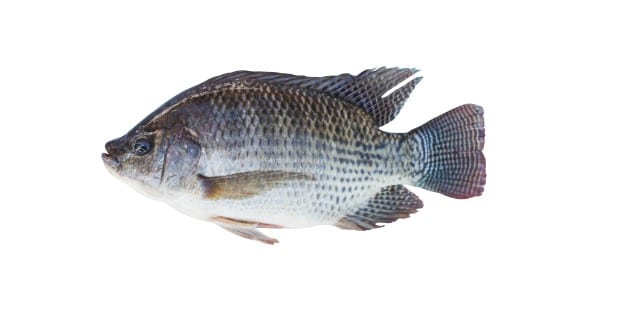
It is not rare to see people comparing the nutritional benefits of different fish on online forums.
This activity not only increases their knowledge about eating fish but also helps them with more alternatives as to what type of fish they should add to their diet.
Even though people believe that all fish offer similar nutrition, reality can’t be farther from this statement. Here we will be covering different aspects of Mahi Mahi vs Tilapia, two of the most famous types of fish available on the market.
Keep in mind that both of these varieties are a healthy addition to most diets.
Though the only reason people get confused between them is because of their similarities. So, make sure to follow through if you are confused about the different benefits and issues with consuming these fish.
The information should help you in understanding how the species are different from each other. Additionally, it should also allow people to decide which variety will suit their taste better.
Mahi Mahi vs Tilapia
| Type Of Fish | Tilapia Fish | Mahi Mahi Fish |
| Folate per 100 grams | 24 micrograms | 5 micrograms |
| Vitamin B12 per 100 grams | 1.58 micrograms | 0.6 micrograms |
| Phosphorus per 100 grams | 170 milligrams | 143 milligrams |
| Selenium per 100 grams | 41.8 micrograms | 36.5 micrograms |
| Potassium per 100 grams | 302 milligrams | 416 milligrams |
| Cholesterol per 100 grams | 50 milligrams | 73 milligrams |
Mahi Mahi
Among many differences, the primary factor you will notice is the change in shape and size of this fish.
It has a bulkier build with a denser texture of meat inside. Many people have mentioned a delicate sweetness with minimal grease in Mahi Mahi.
Aside from that, you will notice the color of this fish has a shade of green while Tilapia comes in darkish grey color. Other than that, the front of this is not pointy and maintains a rounder shape when compared with Tilapia.
Overall, it is quite an excellent addition to your diet and will serve you with many benefits. Mahi Mahi tastes better than Tilapia and makes your recipes more flavorful.
The best thing about Mahi Mahi is that it is almost always wild and caught by anglers.
So, you can rest easy knowing you won’t be consuming fish that came from contaminated fish farms. Wild fish are pretty safe to eat in most conditions. But you should still inquire about the exact location where this fish was caught.
That way, you will be sure that the fish can be safely added to your diet without worrying about toxins and chemical waste. Mahi Mahi is caught in saltwater, where you will notice Tilapia being caught from freshwater sources.
Ideally, the flavor offered by both fish should be clean.
Additionally, if the meat feels mushy, then it’s likely that something is wrong with the fish. So, if you notice any abnormalities with the meat on the market, it is better to stay away and look towards other alternatives.
There are many alternatives to white meat that brings the same flavor and consistency to the table.
So, ask an expert to help point you in the right direction. People should note that the lifespan of Mahi Mahi is generally short when comparing it with other varieties.
The fish only lives from 3 to 4 years which is quite short. However, when it comes to the weight of this variety, people will notice that these go up to 22 kg.
These are dwelling ray-finned fish that are found in subtropical, tropical, and off-shore temperate areas around the world.
Considering this, some people might think about catching the variety. When it comes to this, you should note that the occasional size of the fish is around 5 pounds.
Trying to catch a larger Mahi Mahi is possible but there are tons of things that should be kept in mind.
People need to select their fishing spot carefully as it plays a huge role in where you will find the fish.
On top of this, the equipment being used will also play a huge role as most standard reels and lines cannot withstand this weight. To ensure these don’t break, people have to use durable tools.
Now that you have this information in mind, make sure that you use it carefully as it will increase your chances of catching these fish.
Once you have caught the variety, try out its meat and decide if is worth the effort. Some people might also catch the fish just for fun.
Tilapia
As compared to Mahi Mahi, Tilapia maintains an inferior reputation among people. This is primarily because of the fishy taste, and that Tilapia has a much higher proportion of omega-six to omega-three.
So, this will cause not only inflammatory issues but also be dangerous for people struggling with heart or blood-pressure-related issues.
With that said, Tilapia is mainly in freshwater, and its most supply comes from fish farms across the globe.
In most situations, these farms don’t uphold the sanitation standards set by the authorities and keep supplying fish that might be dangerous to your health.
So, if you have the option of choosing between Mahi Mahi and Tilapia, Mahi Mahi will almost always be a better option.
Not only will it provide you with a better taste. But you won’t have to worry about all the drawbacks linked to Tilapia.
Similarly, if you’re into fitness, Mahi Mahi is the better option between the two fish. Other than that, you might have to pay a bit extra for Mahi Mahi.
That’s because it comes from salt water. On the other hand, Tilapia can be pretty cheap because of its massive supply worldwide from fish farms.
So, even though Tilapia might be better for your budget, it doesn’t give your body the same nutritional benefits when compared with Mahi Mahi.
Tilapia is also somewhat smaller in size and doesn’t bring the same density of meat to the table.
The only thing you need to keep in mind is that if the Tilapia has a farm-raised label, it is better to leave it in the store. You won’t benefit from adding farm-raised Tilapia to your diet.
However, if you can somehow find a reliable supplier with freshwater Tilapia, it shouldn’t be a problem to use Tilapia as a part of your weekly diet. People should note that they also have the option to catch these varieties on their own.
If you are trying to do this, then it is essential that you understand how to tell the wild ones apart from farm-bred tilapia.
The best way for this is by looking at the fish carefully. You will notice that the farm tilapia has fins that are damaged and rough.
This is because the fish roams around in small areas where they run into each other resulting in the fins getting damaged.
On the other hand, when it comes to wild tilapia, people should note that the fins on them are round and soft. This is because the variety roams around freely in streams of water.
Another great way to tell these fish apart is by looking at their meat. The color of wild tilapia will always be darker when comparing it with tilapia caught from farms.
As long as you understand these steps, catching the variety should be a lot easier and tons of problems can be avoided.
The information provided above should be enough for most people to understand how these varieties are different from each other.
If you are still having trouble, then the chart provided should also help you out with the nutritional differences.




